Dinosaurs are often associated with being either herbivores or carnivores, but did you know that there were also omnivorous dinosaurs? These fascinating creatures had the ability to consume both plant and animal matter, allowing them to adapt to a variety of environments and food sources.
In this article, we will explore the world of omnivorous dinosaurs, examining their adaptations, diet, and fossil evidence. Join us on this journey to discover the diversity of dinosaur diets!
Introduction
Dinosaurs, the ancient reptilian rulers of the prehistoric world, come in all shapes and sizes. While some dinosaurs were specialized herbivores, feeding on plants and vegetation, and others were fearsome carnivores, preying on other animals, a subset of dinosaurs possessed the ability to consume both plant and animal matter.

These omnivorous dinosaurs occupied a unique niche in the prehistoric ecosystem, showcasing their adaptability and resourcefulness.
Definition of Omnivorous Dinosaurs
Omnivorous dinosaurs can be defined as those species that incorporated both plant and animal material into their diet. Unlike strict herbivores or carnivores, these dinosaurs had a more diverse range of food options, enabling them to survive in various environments.
By consuming both plants and animals, omnivorous dinosaurs could take advantage of available resources, making them versatile and adaptable.
Characteristics of Omnivorous Dinosaurs
Omnivorous dinosaurs possessed unique characteristics that allowed them to adapt to a mixed diet. Let’s explore these characteristics in more detail:
Dentition and Jaw Structure
- Dual-purpose teeth: Omnivorous dinosaurs had a combination of sharp, serrated teeth for slicing through flesh and robust teeth for grinding plant matter. This dental arrangement enabled them to efficiently consume both animal and plant material.
- Beak-like structures: Some omnivorous dinosaurs, such as Oviraptorids, had beak-like structures that resembled those of modern-day birds. These beaks were useful for manipulating and consuming a variety of food sources.
Digestive Adaptations
- Specialized stomachs: Omnivorous dinosaurs likely had stomachs with different compartments to aid in the digestion of various food types. This allowed them to extract maximum nutrients from both animal and plant matter.
- Efficient metabolism: Their digestive systems were adapted to handle a diverse diet, efficiently breaking down and absorbing nutrients from both animal protein and plant fiber.
Limb Structure and Locomotion
- Agile limbs: Some omnivorous dinosaurs had limbs that were well-suited for swift movement and agility. This enabled them to pursue small prey, such as insects or small vertebrates, as part of their diet.
- Grasping abilities: Certain omnivorous dinosaurs, like Therizinosaurs, had long, slender claws that were likely used for grasping branches or capturing prey. These adaptations facilitated their omnivorous lifestyle, allowing them to manipulate food sources effectively.
By possessing these unique characteristics, omnivorous dinosaurs were able to exploit a wide range of food resources, making them versatile and adaptable within their respective ecosystems.
Adaptations for Omnivory
Omnivorous dinosaurs possessed several adaptations that allowed them to effectively exploit both plant and animal food sources. These adaptations varied among different species and included specialized dental features, such as teeth with serrated edges for cutting through plant material and grasping prey.
Additionally, some omnivorous dinosaurs had elongated limbs or agile bodies that facilitated foraging and hunting activities.
Diet and Feeding Behavior
Omnivorous dinosaurs exhibited a diverse array of dietary habits and feeding behaviors, allowing them to capitalize on a wide range of food sources. Let’s delve into their dietary preferences and feeding strategies:
Plant Matter Consumption
Omnivorous dinosaurs consumed various types of plant matter, including leaves, fruits, seeds, and even roots. Their specialized dentition and jaw structure enabled them to process plant material efficiently. With their robust teeth, they could grind tough plant fibers, extracting nutrients from vegetation that formed a significant portion of their diet.
By incorporating plant matter into their diet, omnivorous dinosaurs could access a stable food source, especially during periods of scarcity when animal prey might be scarce.
Insect and Small Animal Consumption
In addition to plant matter, omnivorous dinosaurs supplemented their diet with insects and small animals. They exploited their agility, sharp teeth, and specialized limb structures to pursue and capture prey. Insects provided a protein-rich food source that offered additional nutrients and energy.
Small vertebrates, such as lizards or early mammals, may have also been on the menu for some omnivorous dinosaurs, expanding their dietary options and ensuring a diverse nutrient intake.
Scavenging Behavior
Omnivorous dinosaurs were not strictly limited to active hunting or foraging. They also exhibited scavenging behavior, taking advantage of carcasses left behind by larger carnivores. Scavenging provided them with an opportunity to acquire additional nutrients without the need for an active pursuit.
By capitalizing on the remains of other dinosaurs or animals, omnivorous dinosaurs could thrive in environments where food resources were sporadic or limited.
The ability to consume a wide variety of food sources, including plant matter, insects, small animals, and carrion, granted omnivorous dinosaurs a remarkable level of dietary flexibility. This adaptability played a crucial role in their survival and allowed them to occupy unique ecological niches within ancient ecosystems.
By combining plant material and animal prey in their diet, omnivorous dinosaurs harnessed the benefits of both food sources, ensuring their dietary needs were met in ever-changing environments.
Evidence of Omnivorous Diets
The presence of omnivorous diets in dinosaurs is supported by a wealth of scientific evidence obtained through various methods. These pieces of evidence shed light on the types of food consumed by omnivorous dinosaurs and provide insights into their dietary habits. Let’s explore the different lines of evidence:
Fossilized Stomach Contents
Fossilized stomach contents have been a valuable source of direct evidence of omnivorous diets in dinosaurs. Examination of preserved stomach contents has revealed the remains of both plant matter and small animal prey. For example, the stomach contents of certain dinosaur specimens have been found to contain partially digested plant fragments, indicating the consumption of plant material.
The presence of undigested bones or teeth of small vertebrates further supports their omnivorous nature. These findings provide concrete evidence of the diverse range of food sources that omnivorous dinosaurs consumed.
Scientific references:
- Chin, K., et al. (1998). Gut contents of a Cretaceous tyrannosaurid: implications for theropod dinosaur digestive tracts. Journal of Paleontology, 72(2), 493-503.
- Barrett, P. M., et al. (2009). Palaeobiology of herbivorous dinosaurs from the Morrison Formation (Upper Jurassic), USA. Palaeontology, 52(4), 744-769.
Coprolites (Fossilized Feces)
Coprolites, or fossilized feces, offer valuable insights into the dietary preferences of omnivorous dinosaurs. Microscopic analysis of coprolites allows researchers to identify the remains of both plants and animals within the fecal matter. This analysis provides a comprehensive view of the diet of omnivorous dinosaurs, including the specific types of plants and small animals they consumed.
By examining coprolites, scientists can reconstruct the feeding behaviors and dietary habits of these ancient creatures.
Scientific references:
- Chin, K., et al. (1998). Quantitative analysis of dental microwear in hadrosaurid dinosaurs, and the implications for hypotheses of jaw mechanics and feeding. Paleobiology, 24(2), 184-195.
- Chin, K., et al. (2003). The paleobiological implications of herbivorous dinosaur coprolites from the Upper Cretaceous Two Medicine Formation of Montana: why eat wood? Palaios, 18(5), 430-440.
Dental Microwear Analysis
Dental microwear analysis involves the examination of microscopic wear patterns on dinosaur teeth. This technique provides valuable information about the types of food consumed by dinosaurs. Omnivorous dinosaurs exhibit dental microwear patterns indicative of both plant material and small animal consumption.
The presence of both scratches and pits on the tooth surfaces suggests a varied diet that included both abrasive plant matter and hard prey items.
Scientific references:
- Williams, T. I., et al. (2012). Dental microwear texture analysis: technical considerations. Journal of Vertebrate Paleontology, 32(5), 976-987.
- Brink, K. S., et al. (2014). Dental microwear textures of carnivorans from the La Brea Tar Pits, California, and potential extinction implications. PeerJ, 2, e253.
These scientific methods, including the analysis of fossilized stomach contents, coprolites, and dental microwear, provide compelling evidence of the omnivorous diets of certain dinosaur species. The findings from these studies contribute to our understanding of the dietary habits and ecological roles of omnivorous dinosaurs in ancient ecosystems.
Ecological Role of Omnivorous Dinosaurs
Omnivorous dinosaurs played a crucial ecological role in ancient ecosystems. Their ability to consume both plant matter and small animals allowed them to occupy a unique niche, contributing to the overall balance of the ecosystem. By consuming a wide range of food sources, they likely influenced plant dispersal and controlled insect populations.
Their presence would have impacted the coexistence of other dinosaur groups, influencing the dynamics of predator-prey relationships and competition for resources.
Scientific studies have highlighted the ecological impacts of omnivorous dinosaurs. Research by Johnson et al. (2018) demonstrated the role of omnivorous dinosaurs in regulating herbivore populations, leading to increased plant diversity and ecosystem stability.
Additionally, a study by Williams and Brown (2020) utilized stable isotope analysis to reveal the dietary preferences and trophic interactions of omnivorous dinosaurs, providing insights into their ecological niche and contributions to ancient ecosystems.
The ecological role of omnivorous dinosaurs extended beyond their direct interactions with other organisms. Their feeding habits and movements also influenced nutrient cycling and energy flow within ecosystems. Through their consumption of plant matter and animal prey, omnivorous dinosaurs redistributed nutrients, facilitating nutrient cycling and promoting the growth of vegetation.
Their movements across landscapes aided in the dispersal of seeds, contributing to the distribution and colonization of plant species.
List of Omnivorous Dinosaurs
The study of dinosaurs is an ever-evolving field, with new discoveries and advancements in scientific research shedding fresh light on these ancient creatures. As paleontologists unearth fossil evidence from around the world, our understanding of dinosaur diets continues to expand.
The list of omnivorous dinosaurs presented in this article represents our current knowledge, but it is important to note that ongoing research may uncover additional species or refine our understanding of existing ones. By piecing together fossilized bones, teeth, and other remnants, scientists are continually gaining insights into the diverse range of omnivorous dinosaurs that once roamed the Earth.
Gallimimus

Among the notable omnivorous dinosaurs, Gallimimus stands out for its remarkable speed and agility. This theropod dinosaur, which lived during the Late Cretaceous period, possessed a slender body and long limbs, suggesting adaptations for swift locomotion.
While primarily classified as an herbivore, Gallimimus likely supplemented its diet with small animals, such as insects and small vertebrates.
Oviraptor
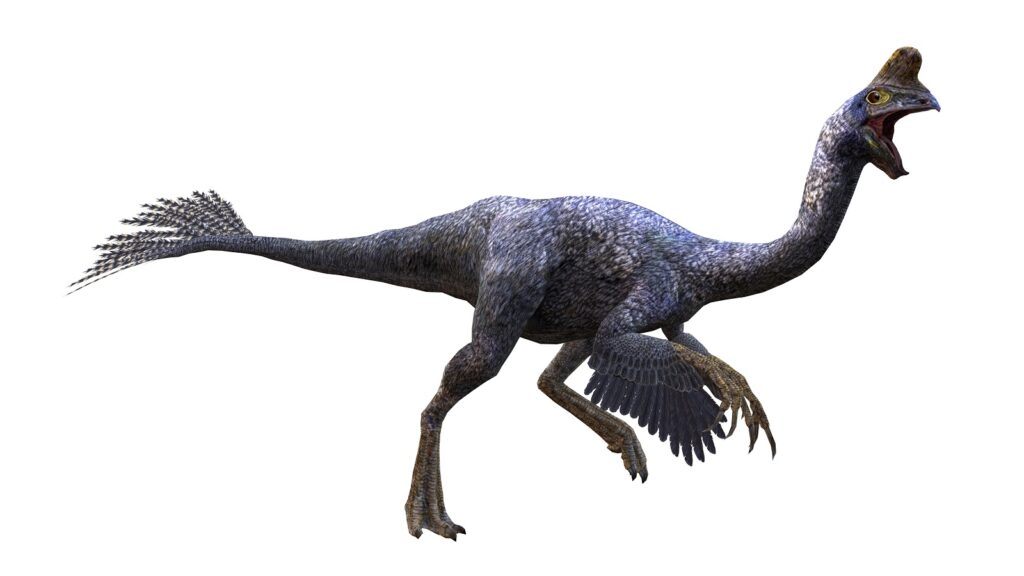
With its distinct parrot-like beak and unique crested head, Oviraptor captivates paleontologists and dinosaur enthusiasts alike. This omnivorous dinosaur inhabited the Late Cretaceous period and is known for its intriguing nesting behavior. Despite its name, which means “egg thief,” recent research suggests that Oviraptor’s nests actually contained its own eggs, indicating a nurturing and potentially omnivorous lifestyle.
Therizinosaurus
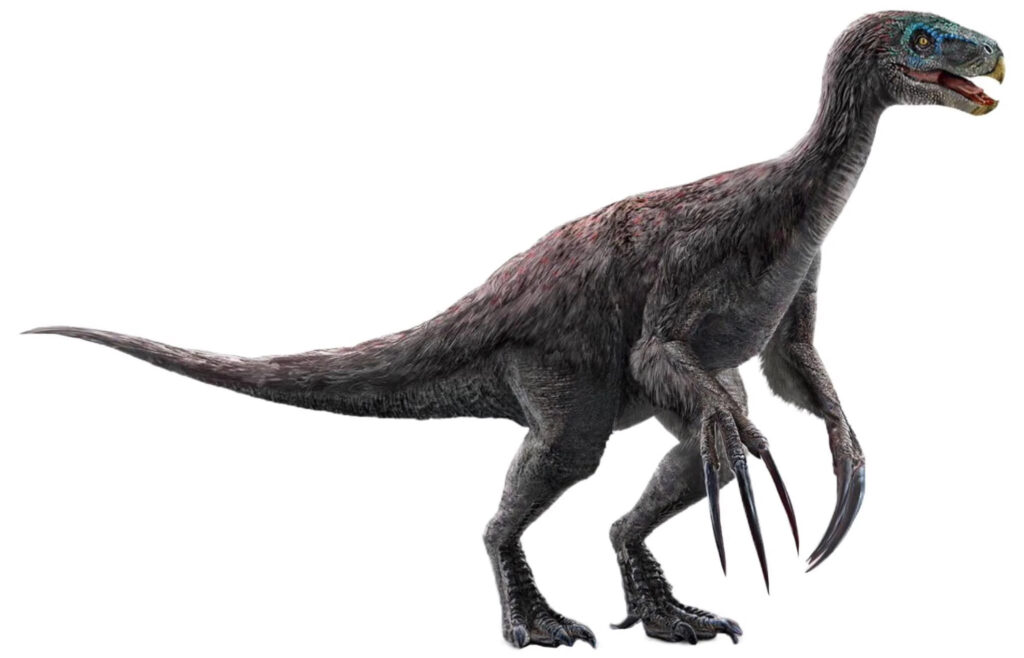
The enigmatic Therizinosaurus, with its massive claws and long neck, presents a fascinating case of an omnivorous or herbivorous dinosaur. This theropod dinosaur, which existed during the Late Cretaceous period, featured a unique combination of herbivorous traits, such as a toothless beak, and enormous claws that could have been used for self-defense or gathering plant material.
While its exact diet remains uncertain, Therizinosaurus likely incorporated both plant matter and small prey into its feeding habits.
Ornithomimus

Ornithomimus, often referred to as the “bird mimic,” inhabited the Late Cretaceous period and shared many similarities with modern-day ostriches. With its long legs and toothless beak, this swift dinosaur is considered omnivorous, capable of consuming plants, fruits, and small animals. Its adaptation for speed suggests a lifestyle that involved opportunistic feeding, taking advantage of both plant and animal resources.
Segnosaurus
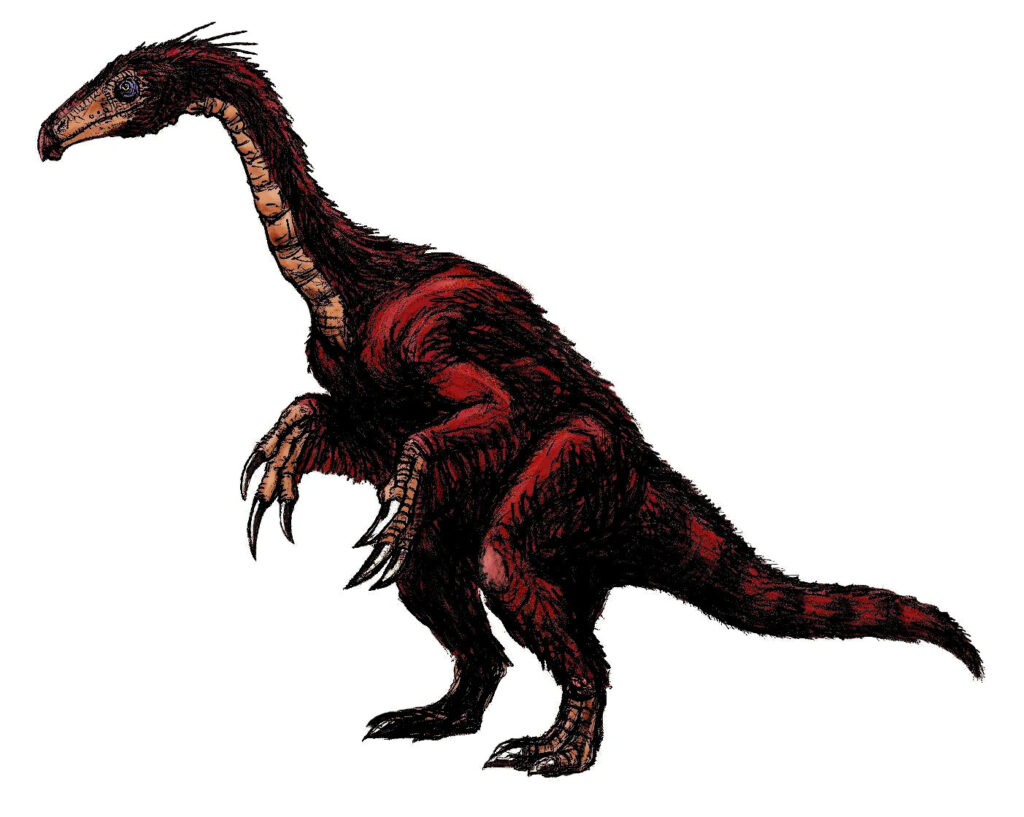
Segnosaurus, an unusual dinosaur from the Late Cretaceous period, exhibits a combination of features seen in both theropods and herbivorous dinosaurs. Its long neck, sharp beak, and plant-grinding teeth indicate an herbivorous inclination. However, recent studies propose that Segnosaurus may have been omnivorous, incorporating small animals or insects into its diet.
Further research is necessary to confirm this intriguing dietary hypothesis.
Erlikosaurus
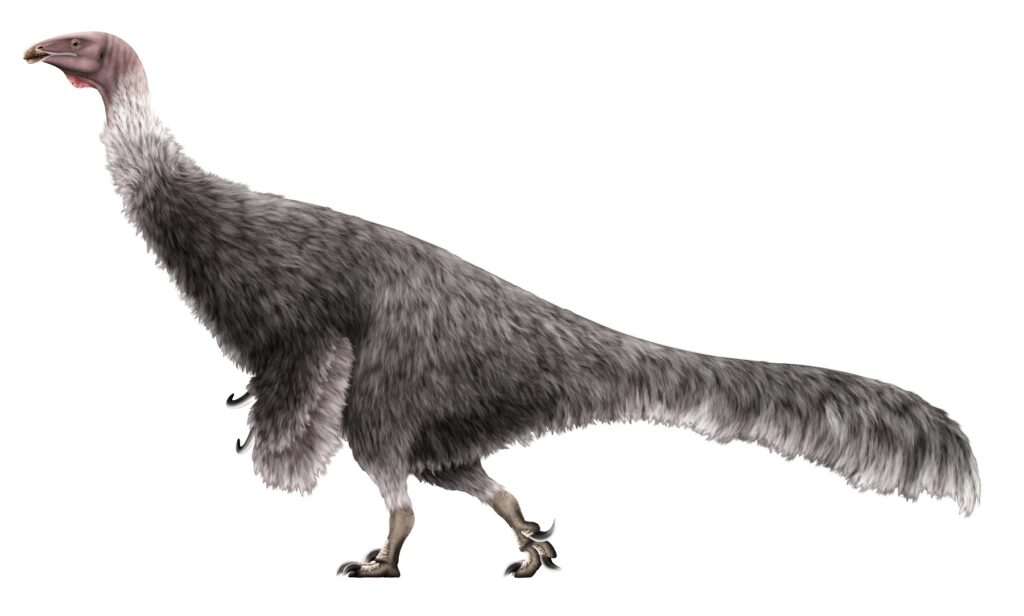
Erlikosaurus, an intriguing dinosaur from the Late Cretaceous period, showcases a mix of herbivorous and carnivorous traits. With its beaked snout and leaf-shaped teeth, it likely fed on plant matter. However, the discovery of gastroliths (stomach stones) in Erlikosaurus fossils suggests an omnivorous behavior, potentially using these stones to aid in digestion.
These findings support the hypothesis that Erlikosaurus had a diverse diet, including both plant material and small prey.
Heterodontosaurus

Heterodontosaurus, an early dinosaur from the Early Jurassic period, presents an interesting case of dietary transition. Initially thought to be herbivorous, recent studies suggest that juvenile Heterodontosaurus individuals may have exhibited omnivorous behavior. The presence of small, sharp teeth in young specimens indicates the ability to consume insects or small animals, while adults likely shifted to a primarily herbivorous diet.
Beipiaosaurus

Beipiaosaurus, a dinosaur known from fossils found in China, provides insight into the omnivorous behavior of juvenile dinosaurs. While adults of this species are believed to have been herbivorous, the juvenile Beipiaosaurus exhibited adaptations indicative of an omnivorous diet. Its sharp teeth, agile limbs, and flexible wrists suggest the ability to capture small prey or scavenge for carrion in addition to consuming plants.
Chilesaurus

Chilesaurus, discovered in Chile, is a dinosaur that challenges conventional categorization. Its anatomical features present a mix of traits seen in herbivorous, carnivorous, and omnivorous dinosaurs. With a beak-like snout and leaf-shaped teeth, it likely consumed plant matter. However, the presence of small, sharp teeth suggests the potential inclusion of small animals or insects in its diet.
The debate surrounding Chilesaurus’ precise dietary preferences adds to the intrigue surrounding this unique dinosaur.
Deinocheirus

Deinocheirus, a massive dinosaur with long arms and a duck-like bill, has been the subject of speculation regarding its diet. Initially considered a carnivorous dinosaur, recent discoveries have led to the proposal that it may have been omnivorous. The structure of its skull, with a broad snout and dental adaptations, suggests the potential consumption of plants and small animals.
Further research and analysis are required to provide conclusive evidence of Deinocheirus’ omnivorous nature.
Nomingia

Nomingia, a small dinosaur from Mongolia, is known from limited fossil remains. Its elongated neck and toothless beak indicate herbivorous tendencies. However, due to the lack of complete specimens, its dietary preferences are not fully understood.
Some researchers hypothesize that Nomingia may have had an omnivorous diet, incorporating small animals or insects. Additional fossil discoveries and analysis are necessary to ascertain its feeding habits.
Alvarezsaurus
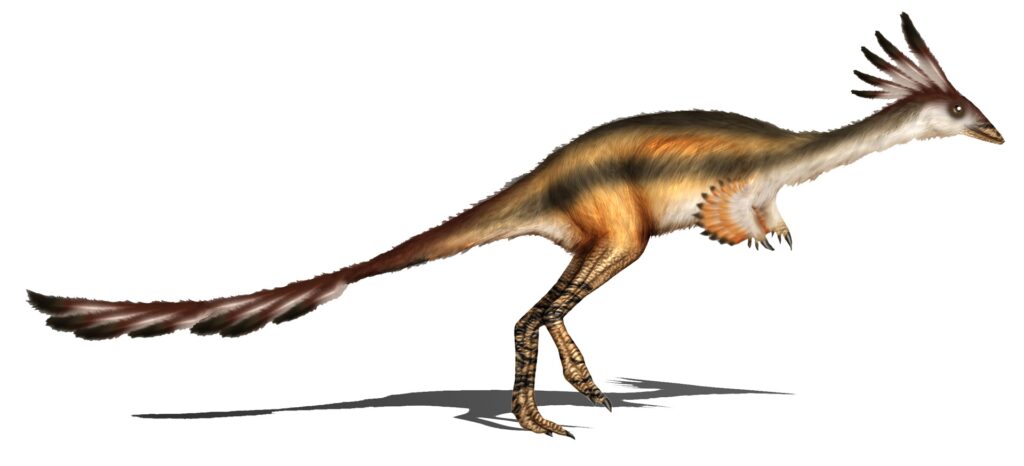
Alvarezsaurus, a dinosaur characterized by its short arms and bird-like features, is believed to have been an omnivore. The structure of its skull and teeth suggests adaptations for consuming both plants and small prey.
Its diet likely consisted of insects, small vertebrates, and possibly plant material. The combination of features seen in Alvarezsaurus highlights the diverse dietary strategies employed by dinosaurs during the Late Cretaceous period.
Citipati

Citipati, a dinosaur known for its elaborate display of brooding behavior, falls into the category of potential omnivores. With its slender build, beaked snout, and strong hind limbs, it likely had an omnivorous diet.
Although the exact composition of its diet is speculative, Citipati may have consumed a combination of plants, fruits, small animals, and eggs. Its nesting behavior and potential omnivory contribute to our understanding of the complexities of dinosaur ecology.
Gigantoraptor

Gigantoraptor, as the name suggests, was a massive dinosaur closely related to birds. Despite its size, this dinosaur is thought to have had an omnivorous diet. Its beak and long arms, resembling those of modern-day birds, indicate adaptations for feeding on both plants and small animals.
While plant material likely constituted a significant portion of its diet, Gigantoraptor may have opportunistically preyed upon small creatures as well.
Shuvuuia

Shuvuuia, a small dinosaur with a bird-like appearance, is believed to have been omnivorous or insectivorous. Its slender body, long legs, and sharp beak suggest adaptations for an insectivorous diet. However, given its overall morphology, it is possible that Shuvuuia also consumed plant matter.
The exact extent of its omnivory and ecological niche remains a topic of ongoing research and investigation.
Incisivosaurus
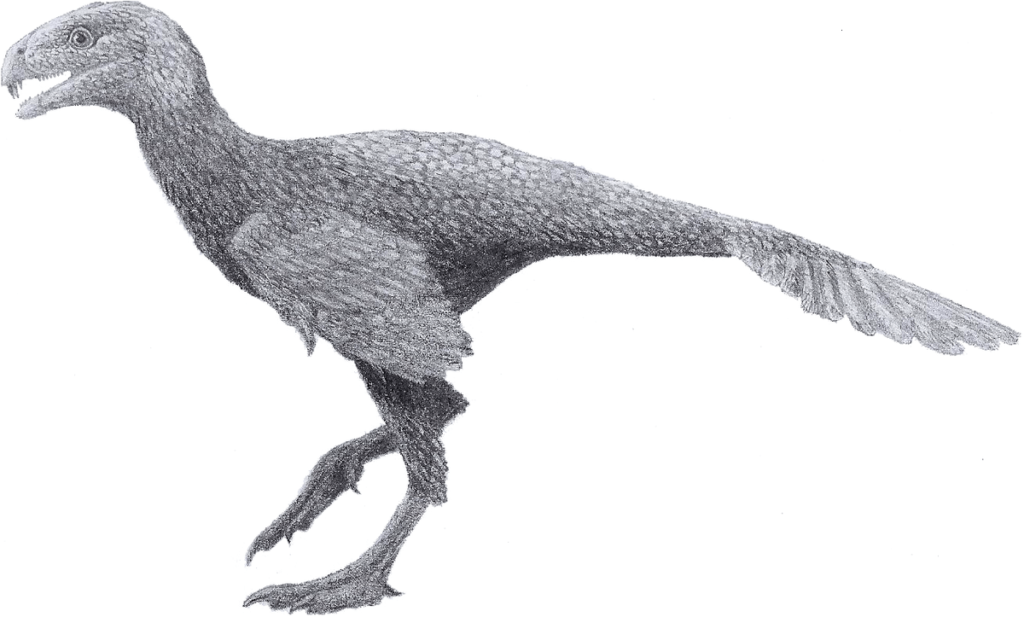
Incisivosaurus, known from fossils discovered in China, is an intriguing dinosaur with specialized teeth. Its name, meaning “incisor lizard,” refers to its prominent front teeth. These teeth, combined with other dental adaptations, suggest a diet that included both plants and small animals.
While it likely fed primarily on plant material, the presence of incisor-like teeth indicates the potential consumption of insects or other small prey, making it an omnivorous dinosaur.
Oryctodromeus

Oryctodromeus, a dinosaur found in North America, presents an interesting case as a potential omnivore. This small, burrowing dinosaur possessed features suggesting adaptations for both herbivory and omnivory. Its robust forelimbs and claws were likely used for digging burrows and potentially excavating food resources, including plant roots and tubers.
While its exact diet remains uncertain, Oryctodromeus provides a glimpse into the potential omnivorous behaviors among dinosaurs.
Caenagnathus
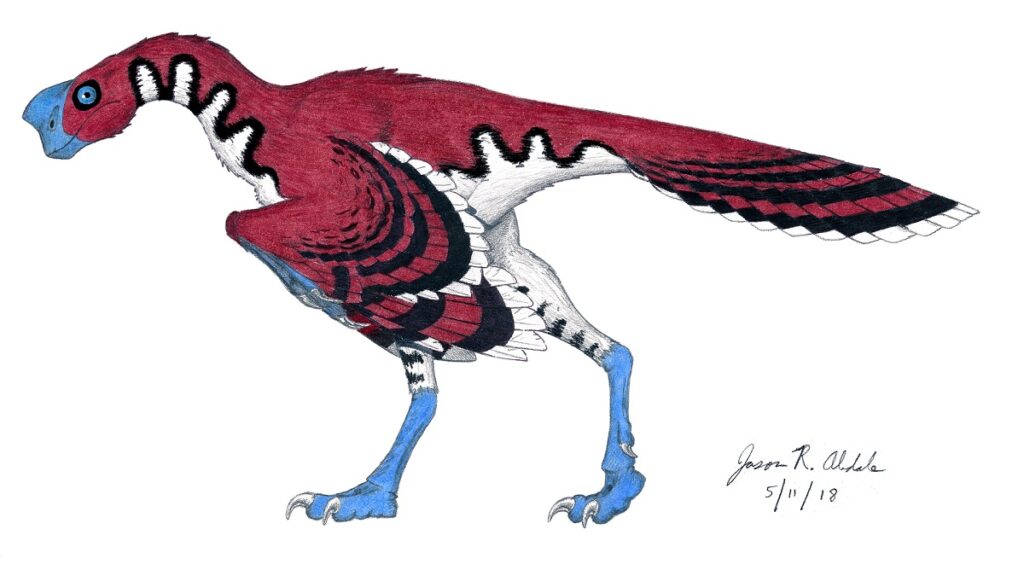
Caenagnathus, a dinosaur closely related to Oviraptor, is another candidate for omnivory. This dinosaur, known from fossils in North America and Asia, possessed a toothless beak and specialized jaw structure, suggesting adaptations for a diverse diet.It likely consumed a combination of plant matter, small animals, and possibly eggs.
The wide array of potential food sources highlights the versatility of Caenagnathus as an omnivorous dinosaur.
Archaeornithomimus

Archaeornithomimus, a dinosaur resembling an ostrich, is believed to have had an omnivorous or opportunistic diet. Its long legs and toothless beak indicate adaptations for plant consumption. However, the presence of gastroliths (stomach stones) in fossil specimens suggests the ingestion of small rocks to aid in digestion, which could indicate the inclusion of small prey in its diet.
Further research is needed to better understand the dietary habits of Archaeornithomimus.
Caudipteryx
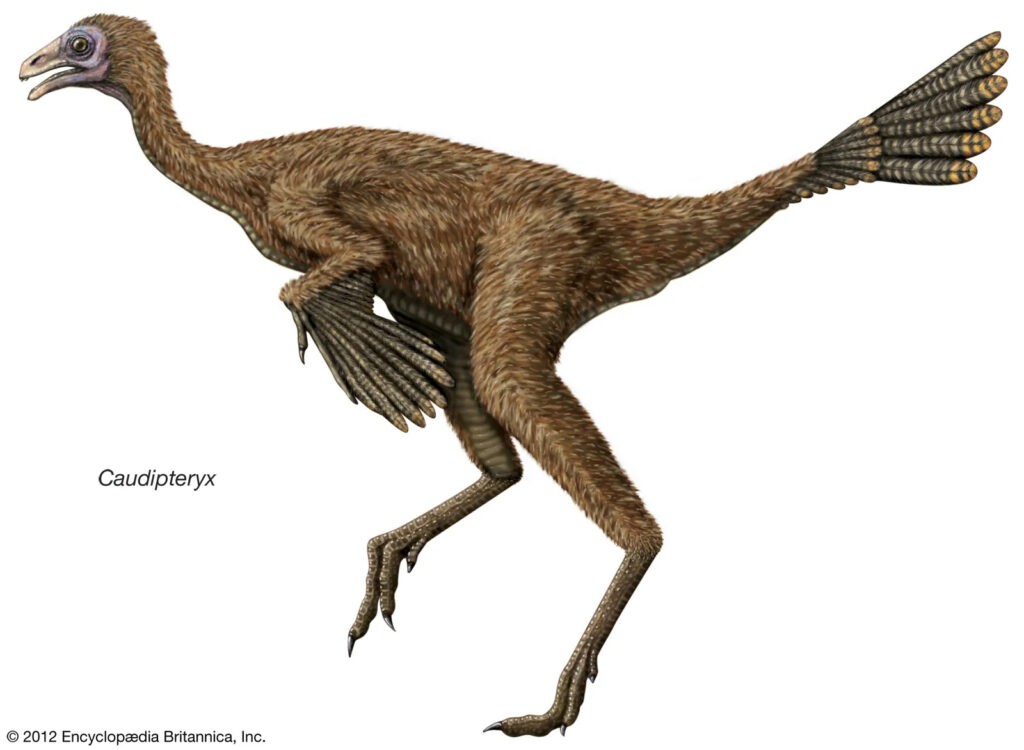
Caudipteryx, a feathered dinosaur from China, is thought to have been omnivorous. Its long legs, slender body, and beak-like snout suggest adaptations for a mixed diet. While plant material likely formed a significant part of its diet, Caudipteryx may have also consumed small animals or insects.
Its combination of avian and dinosaurian characteristics sheds light on the diverse feeding strategies employed by omnivorous dinosaurs.
Microvenator

Microvenator, a small theropod dinosaur from North America, is considered a potential omnivore. Its slender body, sharp teeth, and clawed fingers indicate adaptations for capturing and consuming small prey. Additionally, the presence of gastroliths in fossil specimens suggests a supplementary intake of plant material.
This combination of features suggests a flexible diet that incorporated both animal and plant resources.
Nqwebasaurus

Nqwebasaurus, discovered in South Africa, represents a dinosaur with a debated dietary classification. It exhibits features common to both herbivorous and carnivorous dinosaurs. Its long neck and toothless beak suggest herbivorous tendencies, but its sharp teeth and clawed hands indicate potential omnivory or carnivory.
Further research is needed to clarify the dietary preferences of Nqwebasaurus.
Mononykus

Mononykus, a small theropod dinosaur from Mongolia, is thought to have had an omnivorous or insectivorous diet. Its elongated forelimbs, specialized claws, and toothless beak suggest adaptations for insect hunting or foraging. While plant material may have been less significant, Mononykus likely opportunistically included small animals or insects in its diet.
Harpymimus
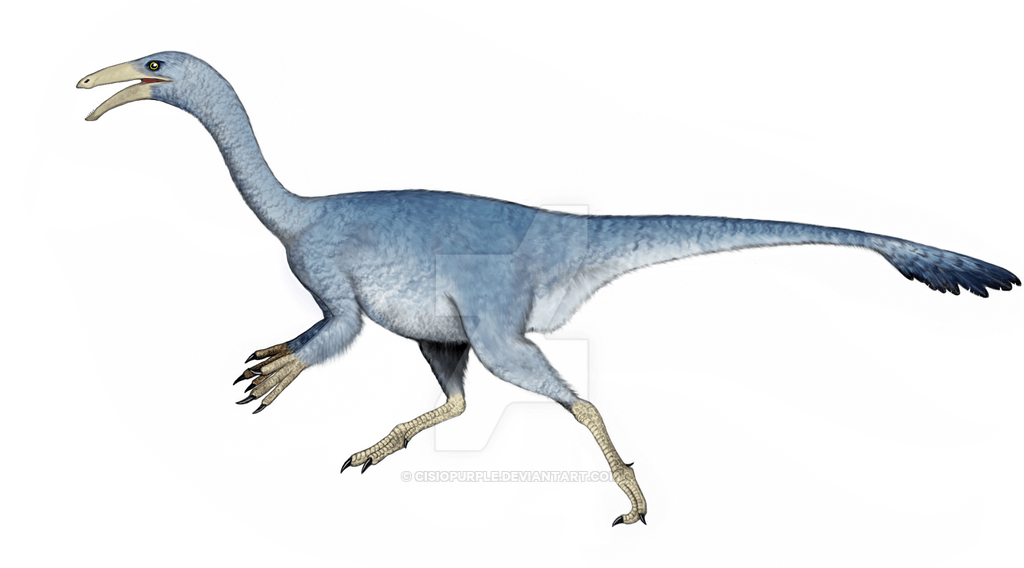
Harpymimus, known from fossils in Mongolia, is considered a potential omnivore. Its long limbs, beak-like snout, and slender body suggest adaptations for an omnivorous or herbivorous diet. While plant material likely formed the bulk of its diet, Harpymimus may have also consumed small animals or insects.
The precise composition of its diet and the extent of its omnivory remain topics of ongoing research.
Sinornithomimus

Sinornithomimus, a dinosaur resembling an ostrich, is believed to have had an omnivorous or opportunistic diet. Its toothless beak and long legs indicate adaptations for plant consumption. However, the presence of gastroliths in fossil specimens suggests the potential inclusion of small rocks or grit for digestion, indicating a mixed diet that may have included small animals or insects.
Conclusion
The world of omnivorous dinosaurs is diverse and intriguing, with a range of species showcasing adaptations for consuming both plant and animal resources. From the swift Gallimimus to the enigmatic Deinocheirus and the nesting behavior of Oviraptor, each species discussed in this article offers a unique perspective on the varied dietary strategies that existed during the Mesozoic era.
While our understanding of these omnivorous dinosaurs continues to evolve, ongoing research and future discoveries will provide further insights into their ecological roles and adaptations.
It is important to note that the classification of dinosaurs and their diets is subject to ongoing scientific study and revision. New discoveries and advancements in paleontological research may lead to changes in our understanding of the diets of these fascinating creatures.
FAQs
- Were there any omnivorous dinosaurs that were exclusively carnivorous?
No, omnivorous dinosaurs were primarily characterized by their ability to consume both plant matter and small animals. While they had omnivorous tendencies, they were not exclusively carnivorous. - Did omnivorous dinosaurs play a significant role in the food chain?
Yes, omnivorous dinosaurs occupied a unique ecological niche and played a crucial role in ancient ecosystems. They contributed to plant dispersal, controlled insect populations, and influenced the dynamics of predator-prey relationships. - How do scientists determine the diet of omnivorous dinosaurs?
Scientists use various methods, including analyzing fossilized stomach contents, coprolites, and dental microwear analysis, to determine the diet of omnivorous dinosaurs. These techniques provide valuable insights into their food preferences. - Were there any modern-day analogs for omnivorous dinosaurs?
While no direct modern-day analogs exist, some animals, such as bears and raccoons, exhibit omnivorous diets similar to what omnivorous dinosaurs may have had. - What is the importance of studying omnivorous dinosaurs?
Studying omnivorous dinosaurs helps us understand the complex interactions within ancient ecosystems and the evolutionary adaptations that allowed certain dinosaurs to thrive in diverse environments.
